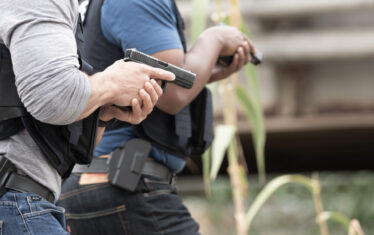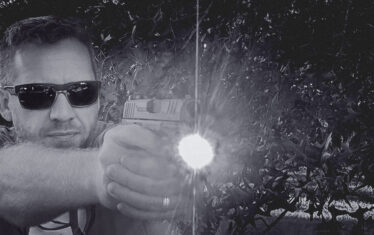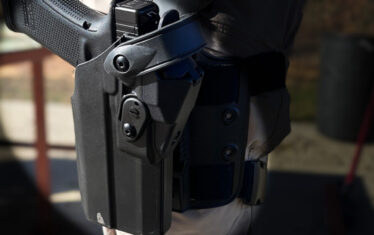When it comes to holsters and firearms, your options are nearly limitless. You can carry a gun in numerous ways, both on and off your body. When it comes to carrying a concealed gun, however, things are narrowed down a bit. By definition, concealed carry means the gun must remain concealed, so carrying with something like a chest rig isn’t possible. It’s worth noting that open carry can utilize any holster, but concealed carry is a bit more limited.
If you’re new to the concealed carry world, you might be surprised at the variety of positions and methods of carry you can engage in. Today, we will break down the various methods of concealed carry and concealed carry positions.
- Outside the Waistband
- Inside the Waistband
- Appendix Carry
- Ankle
- Belly Band
- Shoulder
- Bra
- Purse or Bag
- Fanny Pack
- Chest Pack
- Cross Draw
- Small of Back Carry
Three BAsic Carry Positions
The basic concealed carry positions are the three most popular positions for concealed carry. They are all based on carrying a gun on your waist. The popularity of these positions ensures you have the widest variety of holsters available for the widest variety of guns, accessories, and other tools.
Outside the Waistband
Outside the waistband, or OWB for short, holsters are worn on the outside of your pants, and attached to your belt. OWB options tend to be very comfortable and very quick to draw from. The downside tends to be concealment. They cannot be concealed with a tucked-in shirt and often require an overshirt or baggier than average shirt. The larger the gun, the tougher it is to conceal. Concealed carry holsters in the OWB configuration must be held tight to the body.
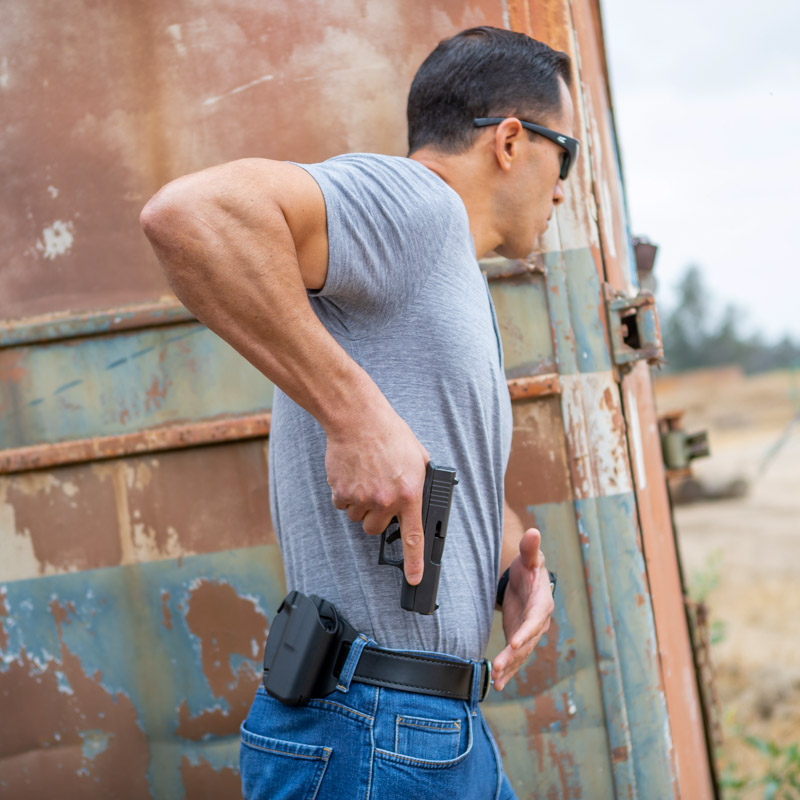
Women tend to have a harder time using OWB due to the fashion constraints of women’s clothing and their body type. OWB holsters tend to print more with women due to their curvier hips. It can be difficult but not impossible.
Proper OWB concealed carry requires a well-made holster, first and foremost. OWB can be used at multiple positions around the belt, but it primarily focuses on your strong side from the 3 to 5 o’clock position.
Inside the Waistband
Inside the Waistband, or IWB, holsters are worn between your pants and your body. By placing the holster primarily inside your pants, you enhance concealment.
IWB allows you to carry guns, both big and small, in a concealed manner, a bit easier than OWB. Inside the Waistband typically positions the holster in the 3 o’clock to 5 o’clock position. IWB carry will be a little less comfy than OWB carry and does require a bit more practice to obtain a good grip on the gun.
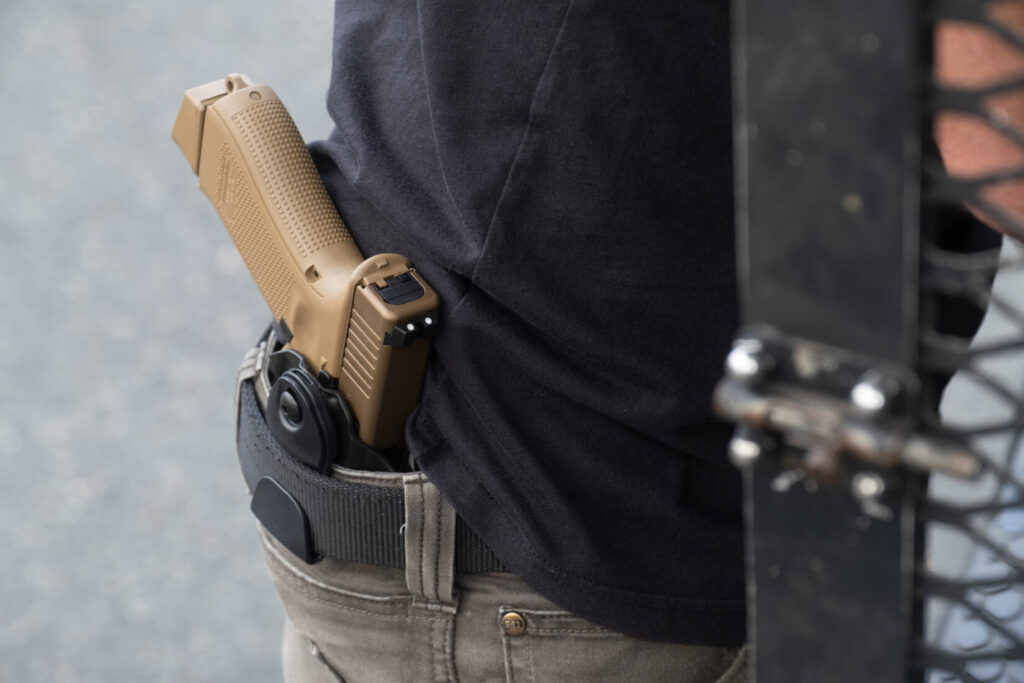
As a matter of safety, your IWB holster should not collapse when the gun is retrieved, and good holster selection goes a long way with IWB carry.
If you wish to carry your firearm with a tucked-in shirt, tuckable holsters are available for IWB designs. These special clips attach to the belt and allow you to tuck your shirt between the gun and the belt clips.
Appendix
Appendix, often called AIWB, is a variant of IWB that deserves its own mention. It’s seen a massive increase in popularity in the last few years. AIWB positions the holster a hair to the left or right of your 12 o’clock position, depending on which of your hands is dominant. The position of an AIWB holster offers two major advantages.

You can draw quicker because the gun is often closer to your hands. Second, it’s easier to conceal larger guns. Since the holster sits against the front of your body and nothing protrudes out from the body, it’s tougher to see lumps and printing. This is especially true for women’s fashion constraints. AIWB also tends to work well for women with wider hips. Still, holsters like Incog X often have a strut that pushes the butt of the gun back into the body.
AIWB holsters can be tuckable if desired. The downsides tend to revolve around comfort. Many carriers report discomfort with appendix carry, meaning a good holster will go a long way. And get a good belt, too.
Deep Concealment Carry positions
Deep Concealment is often used with smaller firearms and in situations where the clothing options are limited or a gun must be never noticed. These positions often require a unique draw type and can be slower to access. Deep concealment can be accomplished by lowering the ride height and sinking a holster under the waistband, or by looking for an alternative place to carry it.
Ankle Carry
Strapping a gun onto your ankle allows you to position it low and inside your pants. Ankle carry can only be used with a small gun, at least if you aim to keep the gun from being easily detected. These rigs are tough to detect unless someone knows what to look for.
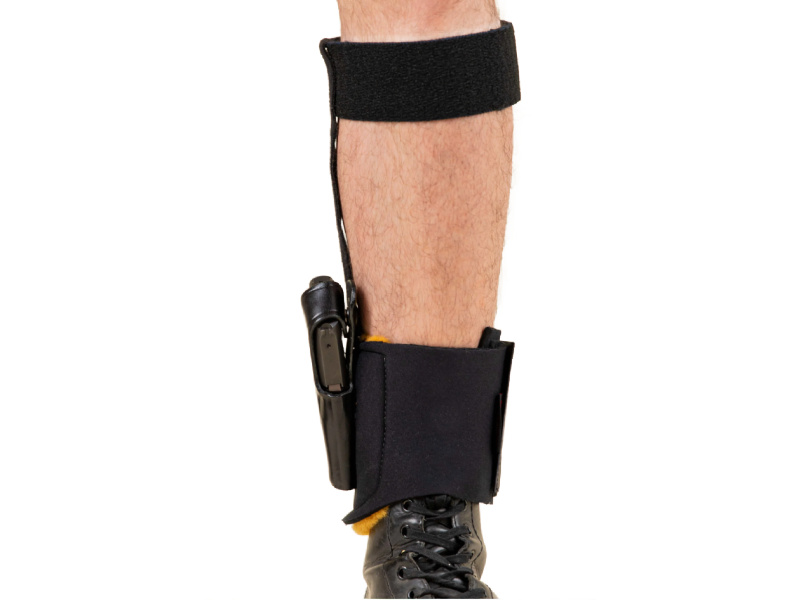
Ankle carry is a good deep concealment option, but it has several associated problems. First, it’s slow to access because you have to reach down to your ankle to draw. You also are stuck wearing pants with ankle carry, making beach and gym trips a hassle. But if you need to draw while sitting down, this is a great position to work from and it is popular for back-up carry.
Pocket carry
You have to have a fairly small gun to do it, but pocket carry is a great deep concealment carry method. Pocket carry requires a good holster to ensure the gun is not printing and the practice is done safely, with the trigger completely covered. These holsters should also keep the gun oriented in an easy-to-access position. Pocket carry allows the user to grip the gun and ready it without making any detectable movements.
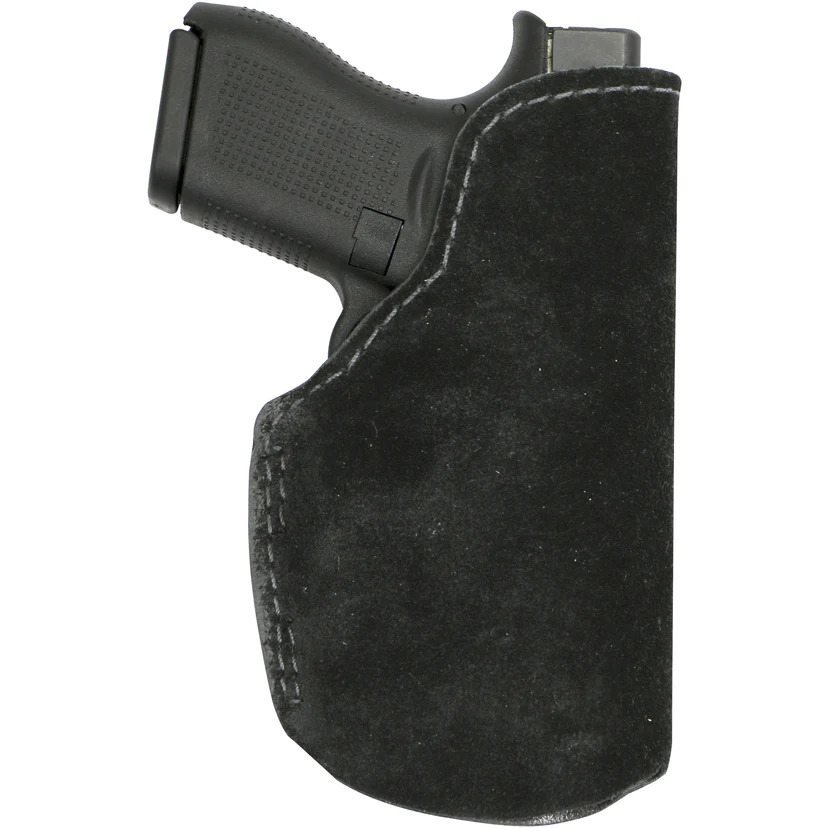
This method limits your gun selection. It’s often difficult for women due to either the lack of pockets or the very small pockets in their clothing. Dresses with pockets tend to be too flowing and don’t offer the support to carry even the smallest guns. Pocket carry is also difficult to draw from when seated. For most, pocket carry is great for casual clothes like shorts and T-shirts, as well as formal clothes like suits.
Belly Band carry
Belly band holsters wrap around your body, securing the gun at nearly any position around your torso you choose. They are an easy option that can be carried with most clothing selections outside of athletic-fit shirts. They tend to be very easy to use and very concealable options. A belly band is an accessible option for women wearing skirts, leggings, and other female-centric clothing.
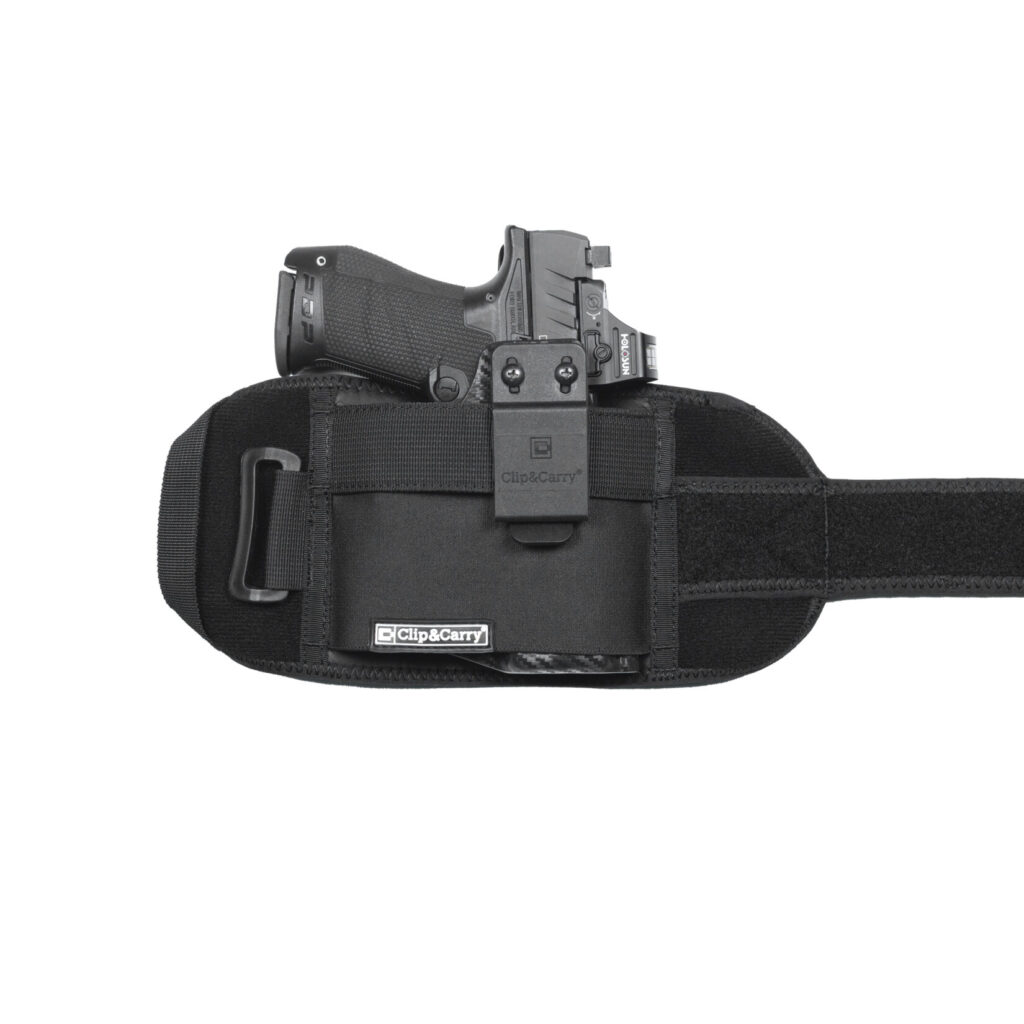
There are a few things to consider about this method of carry. Belly bands add another clothing layer, which can be uncomfortable in hot environments. It’s also very important to find a well-made belly band. The belly band genre is chock full of options that do not provide adequate retention or coverage. It’s important to be selective and find a high-quality belly band.
Upper Body Carry Options
Most holsters revolve around the waist. In some situations, a few upper-body carry options can lift the gun off the waist and enhance concealment and access. Let’s take a look.
Shoulder Holsters
Shoulder holsters place the gun below your non-dominant arm with a secondary strap providing additional support. These holsters are a varied bunch, with leather and Kydex options being widely available.
Shoulder holsters tend to be easy to conceal under jackets and any kind of button-down overshirt. They can also be a comfortable option for women to conceal carry.

Shoulder holster carry does involve some pros and cons to consider. A shoulder holster can make concealment of a larger gun easier and tends to be easily accessible when seated, especially in vehicles.
That said, they do tend to be somewhat slow to draw from and require a specialized draw to do safely. Users will need to adjust the shoulder holster to fit their body correctly. A good shoulder holster also tends to be fairly pricey. The requirement of a coat or overshirt makes them tough to consider for concealed carry.
Bra Carry
Bra holsters are somewhat new to the world of concealed carry. They are a female-exclusive option that secures the gun to the front-center of the bottom of the bra. This works like a belly band but positions the gun horizontally in the direction of your dominant arm. The size of the bust typically dictates the amount of concealment offered. Bra holsters are a convenient carry option that doesn’t force women to wear unfashionable clothing.
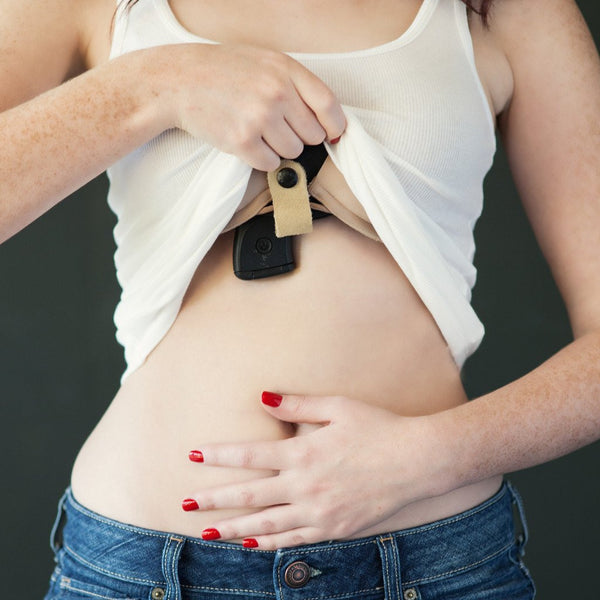
There are benefits and drawbacks of this method of carry, of course. Access to the gun is easy, and the draw can be quick when properly trained. Bra holsters require a specialized draw to accomplish safely, which means additional training. The holsters are also tough to use with your non-dominant hand due to the orientation of the gun. This holster style is somewhat new, so options are also somewhat limited.
Off-Body carry Options
Off-body carry involves using a specialized bag to carry your gun. These rigs still require a holster, and most dedicated off-body carry options are designed with an integral holster.
Purse or Bag
A purse, messenger bag, laptop bag, sling bag, backpack, or any other basic bag can be convenient for concealed carry. There are no comfort issues with an off-body carry bag, and it allows you to carry a large gun very easily. It doesn’t require specialized clothing, and it can be a great summertime carry option when you want to wear light clothing while carrying a capable gun. These bags also make it easy to carry a reload, a light, and a medical kit.
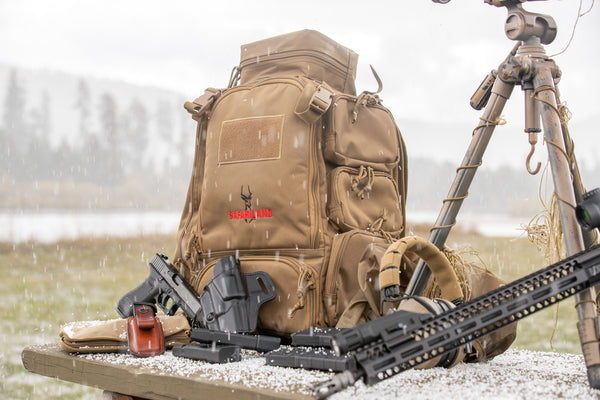
Drawing from a bag can be slow and requires both hands for a quick draw. Opening compartments and accessing your gun can be difficult.
You must also constantly carry the bag and cannot simply leave it on your desk or in your shopping cart for convenience. Your bag must be treated like a holster rather than just a bag and you should train with it, as a holster. You also want to use a purpose-built bag. For example, you want a sling bag and a concealed carry sling bag.
Fanny Pack
Fanny packs deserve a comeback! These waist bags make carrying a gun very convenient. It’s hardly even an off-body option. The concealment is absolute, and with an internal holster, it’s completely safe. You can also easily carry a larger gun, accessories, and spare magazines.
Fanny pack carry can be a great carry option for the gym, exercise, hiking, or other physical activities. You want a dedicated concealed carry fanny pack and not your average fanny pack option.
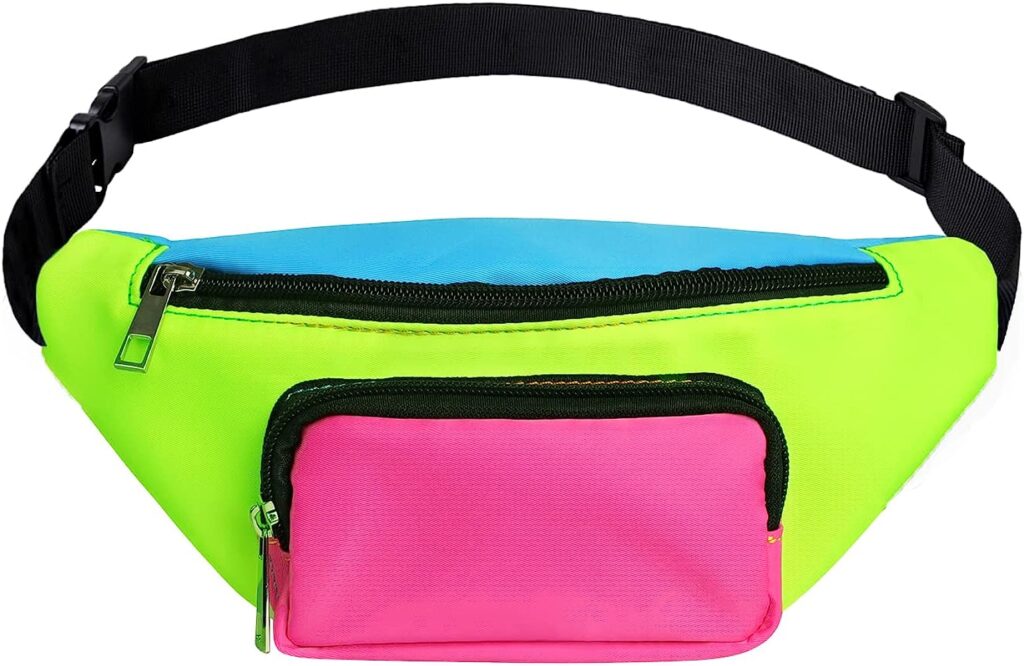
The downside tends to be a slow draw and the requirement for two hands to access the gun. You’ll need to train extensively with the fanny pack and master your draw.
Chest Pack
Chest packs position the holster high up and on the chest. They are often used for concealed carriers who run, hike, and exercise outdoors fairly often. Chest packs provide a lot of support and position the gun up high on the body. Carriers can easily pack a larger-than-average gun with a chest pack.
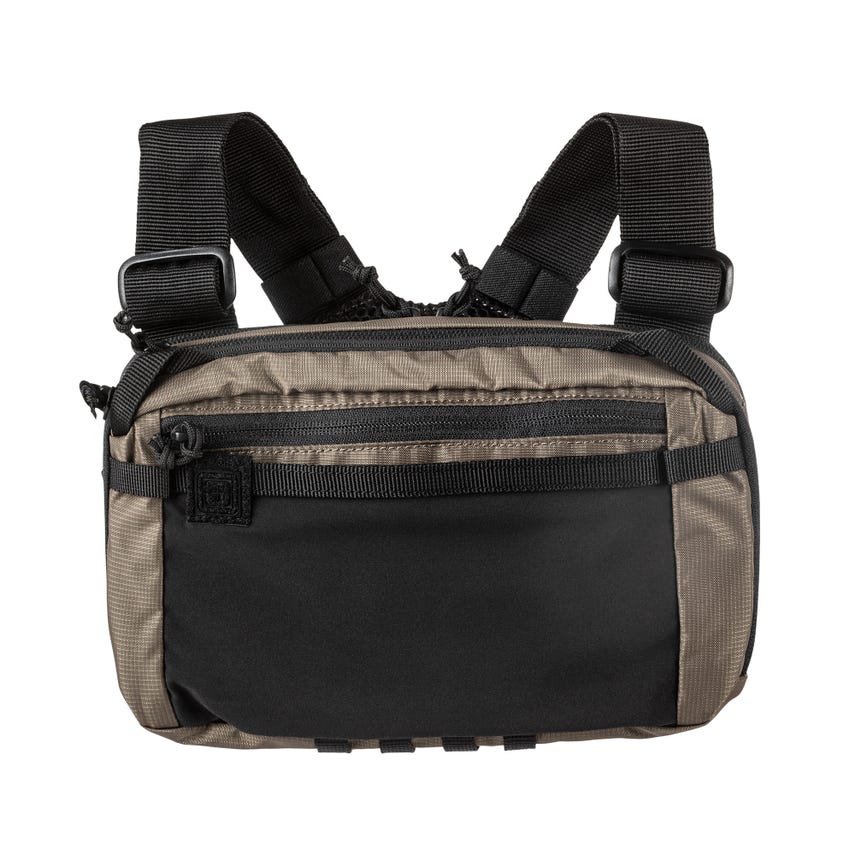
Chest packs also suffer from the slow-to-draw phenomenon that every off-body carry setup has. You will need a chest pack designed to carry a firearm, and you shouldn’t just slap a gun into it and call it a day. Chest packs require a good fit for effective use and plenty of training to top it off.
The Controversial Carry Positions
Not all holster positions are a good option. Some of the ones listed above (like bra carry) stir debate. I hesitate to say there is never a case to use one of these, but they tend to have more downsides than advantages.
Cross Draw
Cross draw positions a gun on the non-dominant side of your body with the hand facing forward. This is good if you’re hunting and carrying a gun, or sitting in a saddle. But, you have to reach around their body to grip the gun and bring it into action.
The downside to this method is that it is slow and cumbersome. Cross draw also presents your gun butt forward, which makes it easy to take if it’s detected.
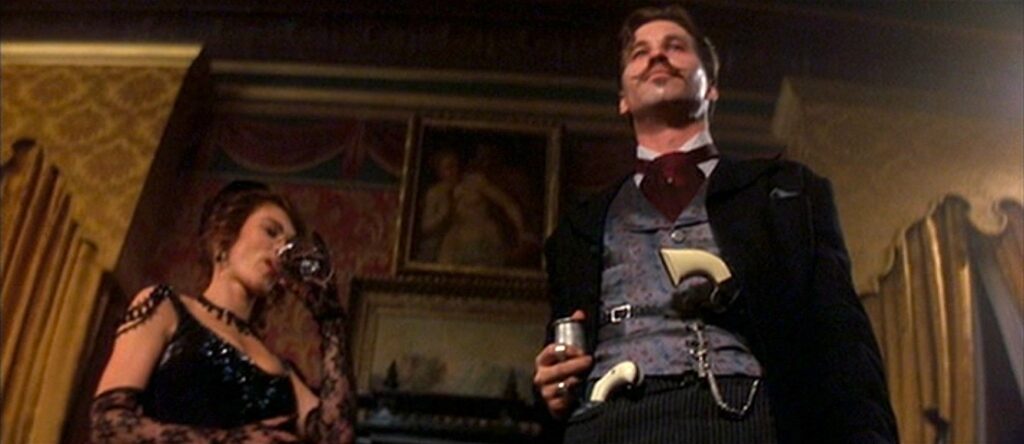
Small of Back
Small of back carry is like the reverse appendix carry. The concern with small of back carry is primarily due to the possibility of injury. If you fall rearward, you might land on your gun, and it may impact your spine.
Additionally, the gun is slower to draw, and you can’t see it at any time. Imagine if your shirt rides up and you don’t know, revealing your gun to everyone. Yet many wear them at the 4-5 o’clock position beside the spine, especially with subcompacts, and do so without complication.
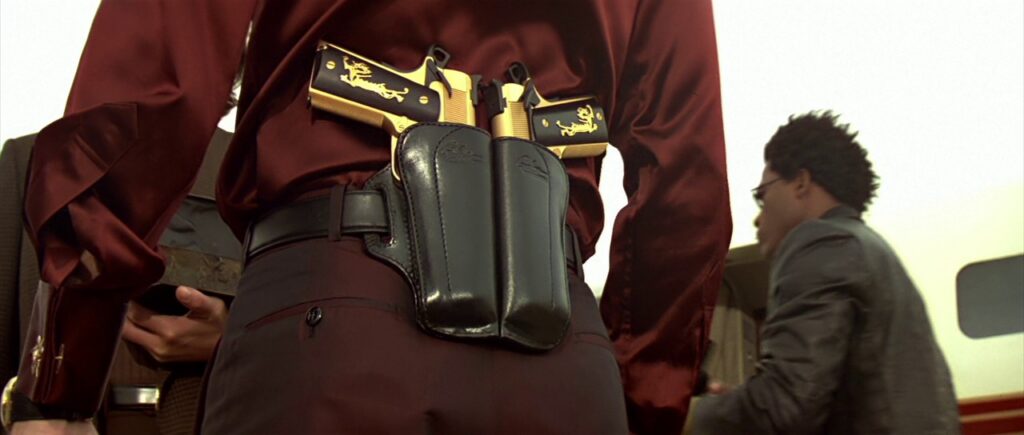
Breaking It Down
Clearly, there are many concealed carry options these days. There are more holster and position types than you can shake a stick at. From the traditional to the cutting-edge, there is a little something for everyone.
My general advice for finding the position for you is… don’t. Don’t marry one position. Find the positions that work for your life and train with them. Having one you prefer and use most often is fine, but be willing to learn multiple so you can tailor concealed carry to your lifestyle and not your lifestyle to concealed carry.
My second piece of advice is to find a good holster that will last. Not all holsters are made the same. Find a quality, well-made, and modern holster. It should be safe with full trigger coverage, easy to draw from, and provide an adequate level of retention. Don’t cheap out when it comes time to buy a holster.

